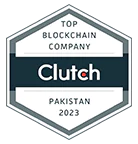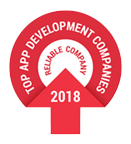Developing Technical Culture

Post-pandemic, it’s evident that the world now has a new norm. The buzz is revolving around Technical Culture. We went from office relocations to hybrid work models and even worked remotely for a brief period.
A survey by Apollo technical revealed that the US has about 4.7 million employees working remotely. The survey also revealed that about 44% of companies don’t encourage remote working.
Albeit, this may vary between industries. Let’s understand the groundwork that fosters such a business model. Since we’re talking about Technical Culture. Let’s understand how this type of culture benefits businesses.
Technical Culture: At a Glance
Technical culture is a type of culture that’s backed by technology and built through shared experiences. According to Kate Smaje, a Senior Partner at McKinsey,
“The accelerating speed of digital means that we are living in a winner-take-all world. Going faster isn’t the answer. Winning companies invest in tech, data, processes, and people. This guarantees speed, better decision-making, and faster course corrections.”
The following aspects can help organizations lay the foundation of a robust technical culture:
- Digital speed
- Readiness to reinvent
- Commitment to digital transformation
- Making data-driven decisions
- Embracing customer-centric approaches
Elements of Technical Culture
Evolving with Emerging Trends
Technical culture relies on two things. The infrastructure, and the eagerness of an organization to embrace new trends. Because you know what they say. Evaluating workflows, identifying problems, and constant experimentation drive an organization to new heights.
In 2018, the Indonesian mining company Petrosa lost its top spot to the growing competition. According to the company’s president. The regulatory policies, changes in the industry, and the ‘trend’ of abandoning carbon-friendly industries. All these factors had nearly run Petrosa out of business.
Then, Petrosa decided to jump on the bandwagon of ‘decarbonization’. Shifting to copper, nickel, gold, and lithium, increased the company’s efficiency and sustainability. This move helped Petrosa regain its lost reputation. Simply put, if the company hadn’t embraced the new trends. It wouldn’t have survived.
Addressing the Talent Gaps
Investing in employee training and upskilling is more than just competence development. According to 55% of knowledge workers in the USA. Switching jobs is an effective way to upskill. In this time of new technological advancements. Training and upskilling existing employees are far more beneficial than hiring new ones.
The current times are nothing short of a challenge. Organizations are struggling to keep up with the plummeting economy. Last week, Amazon decided to halt hiring new employees for its retail business. If you’re thinking ‘cost cutting’ then you’re absolutely correct! To stay afloat, organizations have put themselves in a cost-confinement mode. They are using this time to upskill their existing workforce. So they could easily catch up with the evolving market/business needs.
Organizations that fail to provide upskilling/reskilling opportunities to their employees suffer consequences. They may not only lose valuable employees. But their business might also struggle to reach the desired metrics. Thus, organizations must promote immersive learning that benefits existing and newly hired employees equally.
Establishing Long-Term Goals
Setting long-term goals is the key to having a thriving technical culture at work. It’s important to have policies that aid the transition from legacy systems to a digital mindset.
Your organization may adopt long-term goals such as:
- Improving access to actionable data.
- Maintaining transparency & communication.
- Possessing a mindset to grow.
- Using technology to transform workplace culture.
Long-term goals improve work culture and workflows. They also optimize the current system to remove potential loopholes. All in all, long-term goals function as a foolproof roadmap. Stakeholders get clarity about where their organization should head, without losing focus.
Acting Upon the Established Long-Term Goals
For a technical culture to thrive in an organization. Setting up long-term goals isn’t the only thing necessary. Acting upon each established goal is. Let’s discuss this in detail.
Access to Actionable Data
Meaningful data helps organizations gain a competitive advantage. Predicting upcoming trends, identifying loopholes, and detecting new opportunities. All this becomes remarkably effortless. Allow us to elaborate.
NeilsonIQ uses custom applications to track the altering market trends. The company has set up its own cloud-based platform called the Intelligence Studio. According to Arun Ramaswamy, the CTO of NielsonIQ. His team specifically onboarded candidates capable of handling APIs front-end frameworks.
This move gave the company a chance to build Intelligence Studio. It’s a cloud-based platform that allows data scientists through several functions. Data access, configuration, negotiation, testing, dependency management, and more. Intelligence Studio is capable of it all! This confirms our discussion. For businesses to thrive in a sea competition, data and insights are everything. And looks like NeilsenIQ has all its actionable data in the palm of its hand.
Transparency & Communication
Not maintaining transparency and lack of communication. These two factors are likely to render your employees ambiguous. They wouldn’t know what they were hired to do. And soon, they would get tired of working for you.
Keia Cole the Head of Digital Experience at MassMutual said that onboarding full-stack developers and mobile engineers helped her organization capitalize on the ‘New Normal’. By utilizing the relevant skills of the developers, MassMutual made their own mobile application for front-line healthcare workers. The app enabled users to access a plethora of information pertaining to coverage, insurance, wellness support, and retirement coverage plan.
The mobile application became an unprecedented hit. This scenario confirms one thing. Organizations that communicate their desired goals to their resources are the ones that thrive. Having said that, team leads and supervisors must engage with their teammates to reflect on their daily progress. In case of identifying a bottleneck, remember that communication is the key.
Growth Mindset
Let’s start with a scenario. Denys Tang joined Whole Foods as a senior software development manager. He reported directly to the CTO. A part of his job was to identify how to invest in people that could handle digital order fulfillment along with other supportive measures. As a result, Whole Foods introduced an online-only store, and the rest is history.
Organizations grow when they make apt improvements to match with the growing market trends. The mindset to grow doesn’t happen on its own. It happens when stakeholders take accountability for their shortcomings. And, use constructive criticism to incorporate changes that ensure growth.
Using Technology to Transform Workplace Culture
Once again, we’ll elaborate on this point with an example. H-E-B, the leading grocery chain expanded its digital footprints. This resulted in an improved customer experience. Plus, stakeholders could access all the customer-related information promptly. And, take quick measures to meet their customers’ altering needs.
Technology plays a pivotal role in increasing the overall efficiency of an organization. It also streamlines crucial business processes while maintaining the flow of data. If an organization is looking to achieve rapid growth. Then incorporating the latest tech-related practices is the key. Moreover, this practice would give employees something new to look forward to. Rather than sticking with outdated practices that were trending back when they had joined.
External Factors That Influence Technical Culture
Governments & Policy
In 1992, James Carville the political advisor to Bill Clinton scrawled the phrase, ‘It’s the economy, stupid!’ on a whiteboard. Clinton was running for the White House at that time. Shortly after, President Clinton and Vice President Gore issued a report on technology policy. This set the groundwork for technological development, ‘Technology for America’s Economic Growth: A New Direction to Build Economic Strength’.
Why is it Relevant?
Having the right people on your side can help you cover the legalities of your business. Once you’ve set up the ecosystem. Making structural changes becomes fairly smoother, even with the underlying technicalities.
You can set up the groundwork for a thriving technical culture at your organization by asking yourself these questions:
- Do the current administration and relevant regulatory authorities allow your business model to run smoothly?
- Will foreign policies affect your business?
- How can you protect yourself from penalties?
- What certifications are necessary to operate within certain trade groups?
- To what extent will fiscal and monetary policy affect your business?
- How sensitive is your audience to price fluctuations?
- What lessons should you take from the experience of the last four years?
Elaborating Further
When it comes to government policies and regulations. Understanding public policy is indispensable for building a robust technical culture framework within the organization. You might have to deal with an additional step of laying the legal groundwork. Once that’s in place, building an ecosystem that fosters a technical culture in a company becomes free from potential roadblocks.
Now let’s move toward understanding this from the customer/client perspective. In the era of digital transformation. Gaining access to customer behavior or altering trends is no less than striking a gold mine for businesses. This is why eCommerce ventures and digital subscription services are the most vulnerable to breaches. Exploiters can easily wander into sensitive information and steal whatever info they may find useful.
To avoid such breaches, organizations incorporate a legal component in their technical culture. They hire experienced lawyers as a part of their contingency plan. Even if a data breach does happen. These consultants, compliance auditors, and government body regulators assist companies to understand the policies of the U.S general services administration. Moreover, the right legal teams can help organizations safeguard their reputation when a situation goes awry.
Role of Tech Leaders in Building the Technical Culture
Tech leaders and market influencers are capable of influencing an organization’s technical culture to an enormous extent. With the advent of online conferences, TED talks, and other online activities. Representatives of renowned tech organizations can now talk about traits that foster a technical culture, alongside the possible repercussions. This measure allows novice organizations to lay the foundation of technical culture and prepares them for potential shortcomings.
Allow us to walk you through some common pointers highlighted by the advocates of technical culture.
- Increase the frequency of team meetings.
- Provide new avenues for teams to connect and discuss work-related matters.
- Team leads should frequently connect with their team members to improve communication and comprehensibility.
- Identify and appraise team members that excel at meeting their KPIs.
- Reduce long meetings and replace them with collaborative activities.
- Build passion through storytelling.
- Improve radical transparency.
Technical Culture in a Nutshell
Technical culture and technology go hand in hand. Albeit, the types of technical culture vary across the industry. But, from financial bodies adopting fintech, to healthcare institutions investing in biotech medicine. Examples of technology integration are evident across a myriad of industries.
The bottom line? Organizations big on fostering technical culture tend to do much better. They earn their employees’ trust, expand their organizational footprint, and enjoy an improvement in their overall efficiency.
Moving Forward: The Predictions
- The dominance of IoT in product design
- AI creates space for new specializations
- The adoption of 100% renewable green energy source
- AI-driven exploration, concluded by human reasoning
- Safety, reliability, and resilience for Intelligent Autonomous Systems
We hope you enjoyed reading our take on developing technical culture. If you’ve got examples of companies that have adopted this technical culture. Feel free to add your two cents in the comment section below.















